Top 10 Cities to Live in Canada As A Visitor Or Immigrant in 2025
Canada is consistently ranked among the top countries in the world for quality of life, safety, and hospitality. For visitors—whether tourists, digital nomads, short-term workers, or extended-stay travelers—life in Canada can be both exciting and comfortable.
You will find a high quality of life, enriching experiences, and an atmosphere that’s both vibrant and peaceful.
Canada is one country that is worth visiting in one’s lifetime and this can be achievable with a little preparation—especially in terms of finances, insurance, and visas—life in Canada as a visitor can be incredibly rewarding.
History of Canada
Canada’s history is a rich tapestry of Indigenous cultures, European exploration, colonization, and the gradual development of a diverse and modern nation.
Long before European explorers arrived, Canada was home to Indigenous peoples for thousands of years. These communities—such as the First Nations, Inuit, and Métis—developed distinct cultures, languages, and societies across the vast landscape.
They relied on hunting, fishing, agriculture, and trade, with complex spiritual and governance systems. The Indigenous population is estimated to have been in the hundreds of thousands before European contact.
ALSO, READ Top 10 Cities To Live In London As A Visitor 2025
The first known European to reach Canadian shores was Norse explorer Leif Erikson around 1000 CE, who briefly settled in Newfoundland.
However, sustained European interest began with John Cabot’s 1497 voyage on behalf of England. In the 16th century, French explorer Jacques Cartier explored the St. Lawrence River, claiming the land for France. Samuel de Champlain later founded Quebec City in 1608, establishing the heart of New France.
The French developed a fur trade economy in partnership—and often in conflict—with Indigenous nations. Meanwhile, the British established colonies along the Atlantic coast. The rivalry between Britain and France led to numerous conflicts, culminating in the Seven Years’ War (1756–1763). France ceded much of its North American territory, including Canada, to Britain in 1763 through the Treaty of Paris.
Under British control, Canada saw the growth of English-speaking populations through immigration and the United Empire Loyalists—Americans who fled north after the American Revolution.
Tensions between French and English populations led to the Constitutional Act of 1791, dividing Canada into Upper Canada (English-speaking, later Ontario) and Lower Canada (French-speaking, later Quebec).
In 1837, both Upper and Lower Canada experienced rebellions driven by demands for more democratic governance.
These uprisings led to political reform and the unification of the Canadas in 1841. Growing concerns over American expansionism and the desire for economic cooperation pushed British North American colonies to consider unification.
On July 1, 1867, the Dominion of Canada was created through the British North America Act, initially joining Ontario, Quebec, New Brunswick, and Nova Scotia into a self-governing federation.
This event, known as Confederation, marked the birth of modern Canada. Other provinces and territories joined in subsequent years, including British Columbia (1871), Manitoba (1870), and Newfoundland (1949).
The completion of the Canadian Pacific Railway in 1885 connected the country coast to coast, enabling settlement and economic development. However, it also accelerated the displacement of Indigenous peoples, whose lands were taken through treaties and force.
Throughout the 20th century, Canada gradually asserted more independence from Britain. In 1931, the Statute of Westminster gave Canada full legislative autonomy, and in 1982, Canada patriated its constitution from Britain, adding the Canadian Charter of Rights and Freedoms.
ALSO, READ Top 10 Cities To Live In Nigeria As A Visitor In 2025
Canada has developed into a multicultural society known for its inclusive values, universal healthcare, and peaceful reputation. The country played significant roles in both World Wars and became a founding member of the United Nations and NATO.
In recent decades, Canada has worked toward reconciliation with Indigenous peoples, acknowledging historical injustices such as the residential school system and land dispossession. Efforts continue to address these legacies through truth and reconciliation initiatives.
Today, Canada is a constitutional monarchy with a parliamentary democracy, a member of the Commonwealth, and one of the world’s most developed nations. Its history continues to evolve as it embraces diversity, balances economic growth with environmental stewardship, and strives for social justice.
Here is the general overview of Canada in terms of Hospitality, Tourism, infrastructures, and security
- Safety and Security
Canada is known for its low crime rate and strong law enforcement system. As a visitor, you’ll likely feel safe walking around, even at night in most cities and towns. Police services are approachable and professional, and emergency services (dial 911) are efficient.
As a visitor in Canada, you need to be aware of the basic tips for you to enjoy safety and security during your stay in Canada, here are some tips for staying safe in Canada.
Stay in well-reviewed accommodations.
Use official transportation or rideshare services like Uber.
Follow local laws and customs, which are enforced even for visitors.
- Accommodation Options
Canada offers visitors with many accommodation choices, depending on the length and purpose of stay:
Visitors that came for Short stays can stay in Hotels, and vacation rentals.
While visitors that came for Longer stay can stay in Furnished apartments, home stays, or extended-stay hotels.
- Transportation and Getting Around
Canada’s transportation system is modern and reliable.
Public Transit: Most major cities have buses, trains, and subways.
Driving: Renting a car is common for exploring beyond city limits.
Air Travel: there are domestic flights that shuttle between major cities in Canada frequently.
Intercity Travel: there is also intercity travel Via Rail and bus services like Greyhound (or regional alternatives) connect cities.
- Healthcare Access
Unlike some other countries, visitors are not covered by Canada’s public healthcare system. It’s essential to purchase travel insurance before arriving. Walk-in clinics and hospitals offer quality care, but treatment can be expensive without insurance.
- Language and Communication
Generally, English is the main language across most cities of Canada.
Aside from English being the general language, French is dominant in some cities of Canada such as Quebec and parts of New Brunswick and Ontario. Most Canadians are bilingual or understand English, especially in tourist areas. Signs and public services are often in both languages.
- Cultural Life and Hospitality
Canadians are polite, inclusive, and respectful. It’s common to hear “please,” “thank you,” and “sorry” often. You’ll find Multicultural communities, Diverse cuisine such Indian, Chinese, Middle Eastern, Indigenous, etc. The people of Canada have a welcoming attitude toward visitors and immigrants. You can often strike up friendly conversations in cafes, stores, or while using public transport.
- Climate and Weather
Canada has four seasons, with significant variations which are: Winter (Dec–Mar): Snowy and cold, especially in the prairies and eastern provinces. Ideal for skiing, snowboarding, and winter festivals. Spring (Apr–May): Mild and colorful, with blooming flowers.
Summer (Jun–Aug): Warm and vibrant, perfect for hiking, beaches, and festivals. Fall (Sep–Nov): Cool with breathtaking foliage, especially in Ontario and Quebec.
- Attractions and Experiences
As a visitor, your free time can be filled with visit to:
Nature: National parks, lakes, and mountains across every province.
Cultural Sites: Museums, art galleries, historical landmarks.
Festivals: Toronto Film Festival, Montreal Jazz Festival, Calgary Stampede, Quebec Winter Carnival.
Food and Drink: Maple syrup, poutine, local wine and beer, seafood, and Indigenous cuisine.
- Digital Nomads and Remote Work
While Canada doesn’t yet have a formal “digital nomad visa,” many visitors stay on tourist visas and work remotely for companies based elsewhere.
- Legal Considerations
Visitor Visa (Temporary Resident Visa): Required for citizens of many countries. Valid for up to 6 months per entry.
eTA (Electronic Travel Authorisation): For visa-exempt countries, valid for up to 5 years.
There are work restrictions for some kinds of visas; for instance, you can’t work for a Canadian employer on a visitor visa.
Hence,it is good to always check Canada’s official immigration website or consult an immigration advisor before applying for a Canadian visa.
Top 10 Cities to Live in Canada in 2025
Canada is celebrated globally for its welcoming spirit, breathtaking natural landscapes, and high standard of living.
For visitors looking to stay short-term or long-term in 2025, choosing the right city involves balancing several factors—security, hospitality, amenities, affordability, tourist attractions, weather, and language.
This guide explores ten of the best cities in Canada that stand out as ideal destinations for visitors this year.
- Vancouver, British Columbia
- Toronto, Ontario
- Ottawa, Ontario
- Victoria, British Columbia
- Québec City, Québec
- Halifax, Nova Scotia
- Calgary, Alberta
- Winnipeg, Manitoba
- Montreal, Québec
- St. John’s, Newfoundland and Labrador
1. Vancouver, British Columbia

Vancouver, British Columbia, is a vibrant coastal city nestled between the Pacific Ocean and the North Shore Mountains. Known for its stunning natural beauty, multicultural atmosphere, and high quality of life, it is a popular destination for tourists and residents alike.
Vancouver boasts a mild climate, diverse neighbourhoods, and a thriving arts and culinary scene. It’s also a hub for film production, technology, and outdoor activities such as hiking, skiing, and kayaking. The city’s commitment to sustainability and green living makes it a model for urban development. With its scenic landscapes and dynamic culture, Vancouver offers something for everyone.
Vancouver remains one of Canada’s most beloved cities, combining urban sophistication with stunning natural beauty.
Security
Vancouver boasts a relatively low crime rate, especially in residential and tourist areas like Yaletown, Kitsilano, and Coal Harbour.
The city maintains a strong police presence, and most neighborhoods are safe for visitors.
Hospitality
The multicultural environment makes newcomers feel welcome. The city’s large immigrant population and services for tourists add to its friendly appeal.
Amenities
Vancouver offers excellent public transport, world-class hospitals, and numerous international restaurants. The SkyTrain system is efficient, and there are extensive biking and walking paths.
Affordability
Vancouver is among the more expensive cities in Canada, especially regarding rent. However, short-term stays in budget accommodations and hostels can make it manageable.
Tourist Attractions
From Stanley Park and Granville Island to Grouse Mountain and the Capilano Suspension Bridge, Vancouver is packed with attractions.
Weather
The city enjoys mild winters and warm summers, though it can be rainy, especially in the fall and winter months.
Language
English is the primary language, with many services also available in Mandarin, Punjabi, and French.
2. Toronto, Ontario
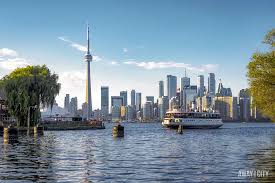
Toronto, Ontario, is Canada’s largest city and a vibrant hub of culture, finance, and diversity.
The city is located on the northwestern shore of Lake Ontario, it is known for its iconic skyline, dominated by the CN Tower, and its bustling urban energy. As the economic engine of Canada, Toronto hosts major industries including finance, technology, media, and education.
The city is also one of the most multicultural in the world, with over half of its population born outside Canada, enriching its neighbourhoods with global cuisines, festivals, and traditions.
Security
Toronto is generally safe, especially downtown and tourist areas like the Entertainment District, Harbourfront, and Yorkville. Petty crime exists but is manageable with basic precautions.
Hospitality
The city’s diverse population and cultural openness make it an incredibly welcoming place for visitors.
Amenities
Toronto excels in healthcare, public transportation (TTC), shopping, and entertainment. There’s easy access to airports and intercity travel.
Affordability
Toronto is expensive in terms of accommodation and food. However, many free or affordable tourist attractions and budget-friendly eateries help offset the costs.
Tourist Attractions
Key attractions include the CN Tower, Royal Ontario Museum, Ripley’s Aquarium, and nearby Niagara Falls.
Weather
Cold, snowy winters and hot, humid summers are typical. Spring and fall are the most pleasant seasons to visit.
Language
English is the dominant language, but you’ll hear dozens of languages on the streets, reflecting its multicultural makeup.
3. Ottawa, Ontario
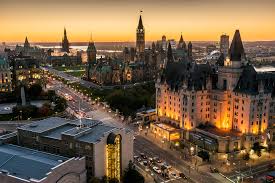
Ottawa, Ontario, is Canada’s capital city and a centre of political, cultural, and historical significance.
It is located at the confluence of the Ottawa, Rideau, and Gatineau Rivers, The city is known for its beautiful architecture, scenic waterways, and bilingual character, with both English and French widely spoken.
As the seat of the federal government, Ottawa is home to Parliament Hill, where iconic buildings like the Centre Block and Peace Tower stand as national symbols.
The city boasts a rich cultural scene with institutions such as the National Gallery of Canada, the Canadian Museum of History, and the Canadian War Museum.
Ottawa’s diverse neighbourhoods, vibrant festivals like Winterlude and Canada Day, and extensive green spaces contribute to its high quality of life.
The Rideau Canal, a UNESCO World Heritage Site, transforms into the world’s largest skating rink each winter. Safe, clean, and welcoming, Ottawa blends history, governance, and modern living uniquely and engagingly.
Security
Ottawa is one of the safest cities in Canada, with low crime rates and a strong police presence.
Hospitality
Friendly locals, multilingual signage, and tourist-friendly services make Ottawa an easy city to navigate for first-time visitors.
Amenities
Excellent healthcare, efficient public transport (OC Transpo), and a well-maintained infrastructure make it ideal for short or extended stays.
Affordability
Ottawa is more affordable than Toronto or Vancouver, especially in terms of rental costs.
Tourist Attractions
Don’t miss Parliament Hill, the Rideau Canal (a UNESCO World Heritage Site), and the Canadian Museum of History.
Weather
Cold, snowy winters contrast with warm, sunny summers. Winter visitors will enjoy skating on the Rideau Canal.
Language
Both English and French are official, and most locals are bilingual.
4. Victoria, British Columbia
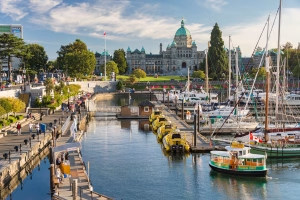
Victoria, British Columbia, is the charming capital of the province, located on the southern tip of Vancouver Island.
The city is known for its mild climate, historic architecture, and lush gardens, Victoria blends old-world charm with coastal beauty. The city’s Inner Harbour is a bustling hub, surrounded by landmarks like the Parliament Buildings and the Fairmont Empress Hotel.
Victoria is also home to the world-famous Butchart Gardens and a vibrant arts and culinary scene. With its walkable downtown, whale-watching tours, and outdoor activities, the city offers a relaxed, scenic lifestyle. Its British colonial heritage gives Victoria a unique and inviting character.
Security
It ranks among Canada’s safest cities, with peaceful neighbourhoods and low crime rates.
Hospitality
With a slower pace and friendly population, Victoria is ideal for those seeking tranquillity and warmth.
Amenities
Quality healthcare, reliable bus services, and well-maintained public spaces highlight the city’s high standard of living.
Affordability
While not the cheapest, Victoria is more affordable than Vancouver and has many budget-friendly stays.
Tourist Attractions
Explore Butchart Gardens, the Inner Harbour, and Craigdarroch Castle. Whale-watching tours are also popular.
Weather
Victoria has the mildest climate in Canada. Winters are wet but rarely snowy; summers are warm and dry.
Language
English is universally spoken, with increasing diversity in recent years.
5. Québec City, Québec
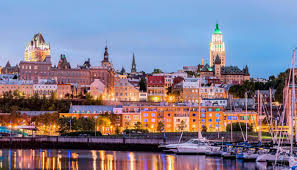
Québec City, Québec, is a historic and culturally rich city located along the St. Lawrence River. As the capital of the province of Québec, it is renowned for its European charm, cobblestone streets, and well-preserved 17th-century architecture.
The iconic Château Frontenac overlooks Old Québec, a UNESCO World Heritage Site. French is the dominant language, adding to the city’s distinct identity.
Québec City offers vibrant festivals, including Winter Carnival, and a strong culinary scene rooted in French traditions. Surrounded by natural beauty, it blends history, culture, and modern living, making it one of Canada’s most picturesque and captivating destinations.
Security
Very low crime rate and a strong sense of community make Québec City one of the safest cities in the country.
Hospitality
Visitors will find charming and polite locals, though some knowledge of French is beneficial.
Amenities
Public transport is reliable, and the healthcare system is top-notch. Tourism services are well-developed.
Affordability
More affordable than many other major Canadian cities, especially in lodging and food.
Tourist Attractions
Old Québec, Château Frontenac, and Montmorency Falls are must-sees.
Weather
Winters are cold and snowy; summers are pleasantly warm. The city’s Winter Carnival is a world-renowned event.
Language
French is the official language, though many in the hospitality sector speak English.
6. Halifax, Nova Scotia
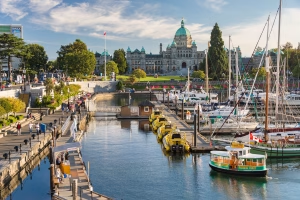
Halifax, Nova Scotia, is a vibrant coastal city known for its rich maritime history, stunning harbor views, and friendly atmosphere.
As the capital of Nova Scotia, it blends modern urban life with historic charm, featuring landmarks like the Halifax Citadel and the bustling waterfront boardwalk.
The city is a cultural hub, home to lively music scenes, diverse cuisine, and top educational institutions like Dalhousie University. Nature lovers enjoy nearby beaches, parks, and scenic trails.
Halifax’s strong economy, welcoming community, and relaxed pace of life make it an appealing place to live, work, or visit on Canada’s picturesque Atlantic coast.
Security
Halifax is a safe city with community-oriented policing and low levels of violent crime.
Hospitality
East Coast hospitality is legendary—visitors are often welcomed like family.
Amenities
A well-developed healthcare system, universities, and vibrant public spaces cater to residents and visitors alike.
Affordability
One of the most affordable urban centres in Canada, especially for food, transport, and accommodation.
Tourist Attractions
Historic sites like Citadel Hill, the Halifax Waterfront, Peggy’s Cove, and nearby Lunenburg draw many.
Weather
Winters can be snowy and wet, but summers are warm and breezy.
Language
English is the primary language, with growing multilingual services.
7. Calgary, Alberta
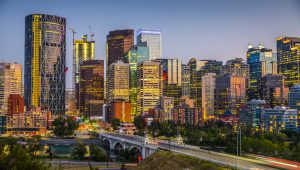
Calgary, Alberta, is a vibrant Canadian city nestled in the foothills of the Rocky Mountains. The city offers diverse cultural experiences, outdoor adventures, and a strong, resilient community spirit..
Calgary, Alberta, is known for its energy industry, scenic beauty, and the annual Calgary Stampede, it blends urban sophistication with western charm.
Security
It is good to note that Calgary is one of the cleanest and safest major cities in Canada.
Hospitality
Albertans are friendly and hospitable, especially during events like the Calgary Stampede.
Amenities
Robust public transport (Calgary Transit), top-tier hospitals, and major retail hubs make it visitor-friendly.
Affordability
More affordable than Toronto or Vancouver, especially in transportation and food.
Tourist Attractions
The Calgary Zoo, Heritage Park, and proximity to Banff and Jasper National Parks make it a great base for exploration.
Weather
Cold winters with snow, but sunny skies year-round. Summers are warm and dry.
Language
English is dominant, with a growing number of immigrant languages in use
8. Winnipeg, Manitoba
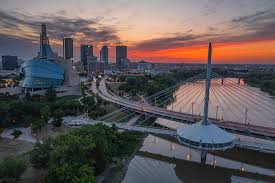
Winnipeg, the capital of Manitoba, is a vibrant city located in the heart of Canada. Known for its cultural diversity and rich history, it offers a unique blend of urban life and natural beauty.
The city is home to renowned attractions such as The Forks, the Canadian Museum for Human Rights, and Assiniboine Park. With a strong arts scene, including festivals like Folklorama and the Winnipeg Fringe Theatre Festival, there’s always something to experience.
Winnipeg also boasts a resilient spirit, famously enduring cold winters while maintaining a warm, welcoming community. It’s a hub for commerce, education, and cultural exchange in central Canada.
Security
While certain neighbourhoods may have higher crime rates, central and tourist areas are generally safe.
Hospitality
Locals are known for their friendliness and strong community bonds.
Amenities
Decent public transport, strong cultural institutions (like the Canadian Museum for Human Rights), and accessible healthcare.
Affordability
One of Canada’s most affordable cities for housing, dining, and entertainment.
Tourist Attractions
The Forks, Assiniboine Park, and various cultural festivals keep visitors entertained.
Weather
Long, cold winters, but beautiful summers and fall seasons.
Language
English is widely spoken, with significant Indigenous and Francophone communities.
9. Montreal, Québec
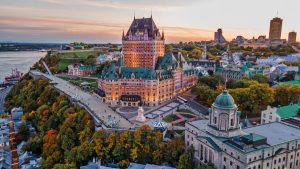
Montreal, Québec, is a vibrant, multicultural city known for its rich history, European charm, and bilingual culture. The city is located on an island in the Saint Lawrence River, it blends old-world architecture with modern skyscrapers.
Montreal, Québec is a hub for arts, culture, and gastronomy, offering world-class festivals, museums, and diverse cuisines. As the largest city in Québec, it boasts a dynamic economy and a thriving tech and education sector.
French is the dominant language, giving the city a unique identity in North America. With its lively neighborhoods and welcoming atmosphere, Montreal is a captivating destination year-round.
Security
Safe for tourists, especially in areas like Plateau, Old Montreal, and Downtown
Hospitality
Montrealers are lively and social. Language barriers are minimal in tourist zones.
Amenities
An excellent metro system, robust arts scene, and many international cuisines make it a great city to explore.
Affordability
More affordable than Toronto or Vancouver, particularly in rental markets.
Tourist Attractions
Visit Mount Royal, Notre-Dame Basilica, and take part in world-famous festivals like Just for Laughs and the Jazz Festival.
Weather
Cold winters with lots of snow; hot, festival-filled summers.
Language
French is the official language, but English is widely understood in downtown areas.
10. St. John’s, Newfoundland and Labrador

St. John’s, Newfoundland and Labrador, is Canada’s easternmost city and one of its oldest. Known for its colorful row houses, rugged coastline, and rich maritime history, it blends natural beauty with urban charm.
The city features historic sites like Signal Hill and a vibrant arts scene. With friendly locals and a strong sense of community, St. John’s offers a unique cultural experience steeped in tradition and Atlantic Canadian hospitality.
Security
Extremely safe, with tight-knit communities and low crime rates.
Hospitality
Newfoundlanders are among the friendliest Canadians you’ll meet.
Amenities
Although smaller, the city has essential amenities including good healthcare, public transit, and Wi-Fi coverage.
Affordability
St. John’s is affordable, particularly for accommodations and dining.
Tourist Attractions
Signal Hill, Cape Spear, and iceberg or puffin tours are popular with tourists.
Weather
Foggy and cool, with mild summers and snowy winters.
Language
English with a unique local dialect and Irish-influenced culture.
Conclusion
Canada is a vast and varied country, offering something for every visitor. Whether you are looking for the hustle of a major city like Toronto, the historic charm of Québec City, or the serene beauty of Victoria, the country offers a multitude of safe, welcoming, and enjoyable places to stay. Each of these top ten cities reflects Canada’s diversity and quality of life—making them excellent choices for travellers in 2025.


